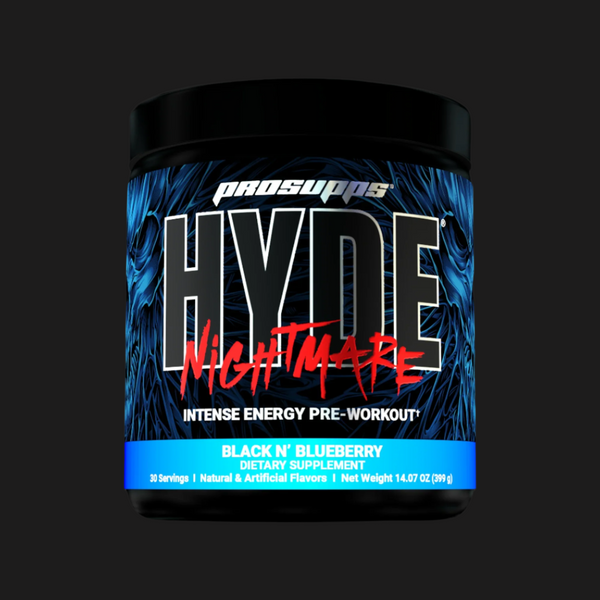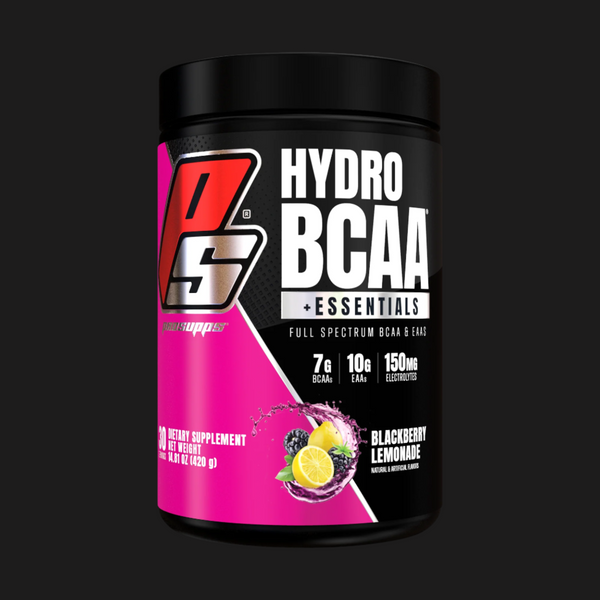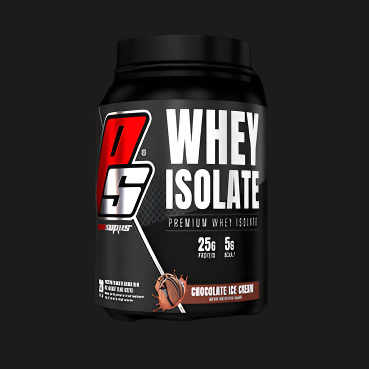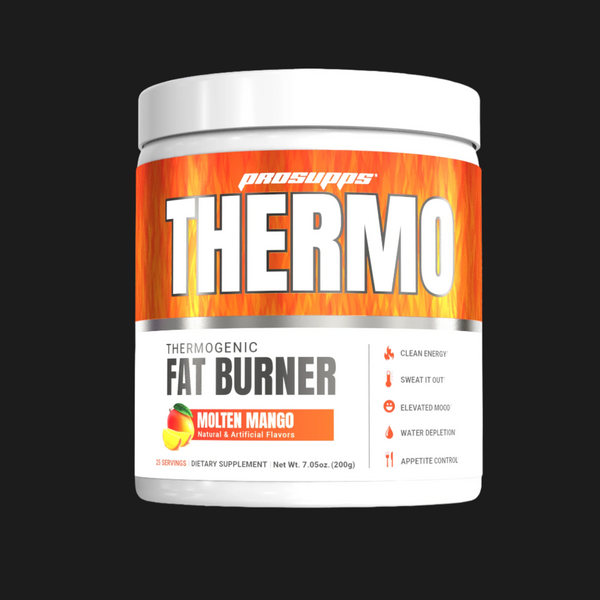L-Citrulline vs. citrulline malate: Which one should you take?
 Written by Pri Prunella
Written by Pri Prunella October 21, 2025
If you’ve ever researched performance-enhancing supplements for better pumps, endurance, or recovery, you’ve probably seen two names pop up: L-citrulline and citrulline malate. While both are popular for boosting nitric oxide and enhancing workout performance, they work slightly differently, and choosing the right one depends on your training goals. This guide breaks down the differences between L-citrulline vs. citrulline malate so you can decide which one deserves a place in your supplement stack.
What does L-citrulline do?
L-citrulline is a naturally occurring amino acid that converts into L-arginine in the body, which then boosts nitric oxide production. Higher nitric oxide levels help dilate blood vessels, improving blood flow and delivering more oxygen and nutrients to working muscles. This is what creates that sought-after “muscle pump” many bodybuilders love.
Research also suggests that L-citrulline can enhance circulation, support muscle recovery, and even aid cardiovascular health. If your main priority is maximising pumps and improving blood flow during resistance training, pure L-citrulline might be your go-to choice. You can learn more in our Citrulline supplementation guide.
What does citrulline malate do?
Citrulline malate (CM) combines L-citrulline with malic acid, a compound involved in the Krebs cycle, which helps the body produce ATP (your muscles’ primary energy currency). By pairing nitric oxide benefits with increased energy production, citrulline malate supports both muscle pumps and endurance.
Athletes often choose citrulline malate for activities that require sustained performance, whether that’s high-rep lifting, HIIT sessions, or endurance sports. It’s also a common ingredient in pre-workout supplements because it helps delay muscle fatigue and supports post-workout recovery.
Citrulline malate vs. L-citrulline: What’s the difference?
When people search for citrulline malate vs. L-citrulline, they’re usually trying to figure out which one better supports their training style. On the surface, both forms of citrulline promise enhanced muscle pumps and improved training performance, but they deliver these benefits in slightly different ways. This section breaks down how each one works and helps you discover which version aligns best with your goals, whether that’s getting maximal pumps, enhancing endurance, or powering through high-intensity sessions.
Molecular composition & absorption
L-citrulline is simply the pure amino acid, meaning you get more citrulline per gram. Citrulline malate, on the other hand, blends citrulline with malic acid. While the malate slightly reduces the citrulline content per gram, it may improve absorption and add energy-production benefits. Both forms elevate nitric oxide levels, but CM offers an added performance edge through ATP support.
Training goals: Pumps vs. performance
If you’re chasing maximum pumps, L-citrulline is the stronger choice. It’s popular in muscle-building supplements aimed at bodybuilding and hypertrophy-focused training. Citrulline malate, however, is more suited for athletes seeking a blend of strength, endurance, and reduced fatigue, making it a staple for functional training and competitive sports.
Dosage
For best results, studies suggest taking 3–4 g of L-citrulline or 5–8 g of citrulline malate about 30–60 minutes before exercise. This timing aligns with the peak plasma concentrations of citrulline and its conversion into arginine and nitric oxide, helping to maximize muscle pump, delay fatigue, and reduce perceived exertion and soreness. You can also combine either form with creatine powder supplements or beta-alanine for an extra performance boost.
Side effects & safety
Both forms are well tolerated up to 10 g daily. The only potential side effect is mild digestive discomfort at higher doses, which is rare.
| Feature | L-Citrulline | Citrulline Malate |
|---|---|---|
| Composition | Pure amino acid | L-citrulline + malic acid |
| Main benefit | Nitric oxide & pumps | Pumps + endurance + ATP support |
| Best for | Nitric oxide & pumps | Endurance, high-intensity training |
| Effective dose | 3–4 g | 5–8 g |
Citrulline malate benefits vs. L-citrulline benefits
While L-citrulline and citrulline malate share the same core ingredient, their performance profiles aren’t identical. Both increase nitric oxide levels and improve blood flow, but citrulline malate’s malic acid component adds an extra dimension by supporting energy production. Understanding the unique benefits of each form can help you select the right one for your workouts and recovery goals.
L-citrulline benefits
Among the key L-citrulline benefits, one of the most notable is its ability to boost nitric oxide levels more effectively than L-arginine itself. This is because L-citrulline bypasses the rapid breakdown that oral L-arginine experiences in the digestive system, allowing more arginine to circulate in the bloodstream. The result? Stronger vasodilation, which means enhanced blood flow and more intense muscle pumps during training.
Improved circulation doesn’t just benefit performance; it also plays a role in recovery. By delivering oxygen and nutrients to muscles more efficiently, L-citrulline can support muscle recovery and post-workout repair. Additionally, the same nitric oxide pathways that improve workout performance may also support vascular health and erectile function, making L-citrulline a well-rounded supplement for overall circulation.
Citrulline malate benefits
When it comes to citrulline malate benefits, athletes often highlight its dual impact on pumps and energy. Citrulline malate takes the pump-boosting effects of L-citrulline and adds an energy-enhancing twist. The malic acid component is a key player in the Krebs cycle, which is responsible for producing ATP, the primary fuel for muscle contractions. This means citrulline malate not only widens blood vessels but also improves strength and power output by helping muscles generate energy more efficiently.
Athletes often choose citrulline malate for its ability to delay fatigue during intense or prolonged workouts. By reducing ammonia accumulation through the urea cycle and improving ATP regeneration, it can help you push through extra reps or extend high-intensity intervals. Its combination of pump and endurance benefits makes it particularly valuable for sports that require both explosive power and sustained performance, from bodybuilding to CrossFit to endurance cycling.
Mechanisms behind L-citrulline vs. citrulline malate
When comparing L-citrulline vs. citrulline malate, both forms share the same primary pathways: they participate in the urea cycle, helping to clear ammonia from the bloodstream, which delays fatigue, and they stimulate nitric oxide production to widen blood vessels and improve nutrient delivery to working muscles. The difference lies in the malate. In citrulline malate, malic acid feeds into ATP production pathways, effectively giving your muscles more fuel to work with during training. This extra layer of energy support makes citrulline malate the preferred option for longer, more intense sessions, while pure L-citrulline remains a potent choice for those focused on maximum nitric oxide levels and pump quality.
Final verdict: L-citrulline vs. citrulline malate, which is better?
The debate over L-citrulline vs. citrulline malate doesn’t have a one-size-fits-all answer. If your main focus is achieving the most intense muscle pumps possible and maximising blood flow, L-citrulline may be your best bet, especially if you’re stacking it with other muscle-building supplements. But if you want a supplement that delivers pumps and endurance benefits for strength training, CrossFit, or long cardio sessions, citrulline malate takes the win.
Whichever you choose, pairing it with proven performance-enhancing supplements like creatine or L-carnitine can help you take your training further.
FAQs
Is citrulline malate better than L-citrulline?
It depends on your goals. For combined pumps, energy, and endurance, citrulline malate often comes out ahead. If your priority is pure nitric oxide production and better blood flow, L-citrulline may be the more efficient choice.
Can L-citrulline be as effective as citrulline malate?
Yes, if your goal is pure nitric oxide boost and better muscle pumps, L-citrulline can be equally, or even more effective.
What is the most effective form of L-citrulline?
For pumps and blood flow, pure L-citrulline is most effective. For endurance and strength, citrulline malate is better.
Can I drink citrulline malate every day?
Yes, daily use is safe for most people within recommended dosages.
Can I mix citrulline and creatine?
Absolutely. Stacking citrulline with creatine powder can help improve strength, endurance, and recovery.
References
- Miller, K. (2023b, September 6). L-citrulline. WebMD. https://www.webmd.com/vitamins-and-supplements/l-citrulline-uses-and-risks
- Allerton, T. D., Proctor, D. N., Stephens, J. M., Dugas, T. R., Spielmann, G., & Irving, B. A. (2018). L-Citrulline Supplementation: Impact on Cardiometabolic Health. Nutrients, 10(7), 921. https://doi.org/10.3390/nu10070921
- Alabduladhem TO, Bordoni B. Physiology, Krebs Cycle. [Updated 2022 Nov 23]. In: StatPearls [Internet]. Treasure Island (FL): StatPearls Publishing; 2025 Jan-. https://www.ncbi.nlm.nih.gov/books/NBK556032/
- Dunn J, Grider MH. Physiology, Adenosine Triphosphate. [Updated 2023 Feb 13]. In: StatPearls [Internet]. Treasure Island (FL): StatPearls Publishing; 2025 Jan-. https://www.ncbi.nlm.nih.gov/books/NBK553175/
- Gough, L. A., Sparks, S. A., McNaughton, L. R., Higgins, M. F., Newbury, J. W., Trexler, E., Faghy, M. A., & Bridge, C. A. (2021). A critical review of citrulline malate supplementation and exercise performance. European Journal of Applied Physiology, 121(12), 3283–3295. https://doi.org/10.1007/s00421-021-04774-6
- Rhim, H. C., Kim, S. J., Park, J., & Jang, K. M. (2020). Effect of citrulline on post-exercise rating of perceived exertion, muscle soreness, and blood lactate levels: A systematic review and meta-analysis. Journal of Sport and Health Science, 9(6), 553–561. https://doi.org/10.1016/j.jshs.2020.02.003
- Agarwal, U., Didelija, I. C., Yuan, Y., Wang, X., & Marini, J. C. (2017). Supplemental Citrulline Is More Efficient Than Arginine in Increasing Systemic Arginine Availability in Mice. The Journal of Nutrition, 147(4), 596–602. https://doi.org/10.3945/jn.116.240382
- Urea Cycle Disorder. (2025, June 2). Cleveland Clinic. https://my.clevelandclinic.org/health/diseases/23470-urea-cycle-disorder
GET LEAN
 Why You're Struggling
Can't Lean Out? Here's Why You're Struggling
Why You're Struggling
Can't Lean Out? Here's Why You're Struggling
We all know the feeling. You’ve been working hard in the gym, sticking to your diet and getting in your...
 Weight Loss
Choosing the Best Protein Powder for Weight Loss
Weight Loss
Choosing the Best Protein Powder for Weight Loss
Struggling to shed body fat and lean out? You might need to focus more on your nutrition, specifically your protein...
 Weight Loss
9 Ways to Speed Up Your Weight Loss and Burn More Fat
Weight Loss
9 Ways to Speed Up Your Weight Loss and Burn More Fat
Weight loss is a major goal for more than 40 percent of Americans. Is it something you’re working toward, too?
 Workout Routine
10 Tips for Building a Sustainable Workout Routine
Workout Routine
10 Tips for Building a Sustainable Workout Routine
Starting a fitness journey is an exciting time, but maintaining a sustainable workout routine can be challenging. From setting realistic...



























